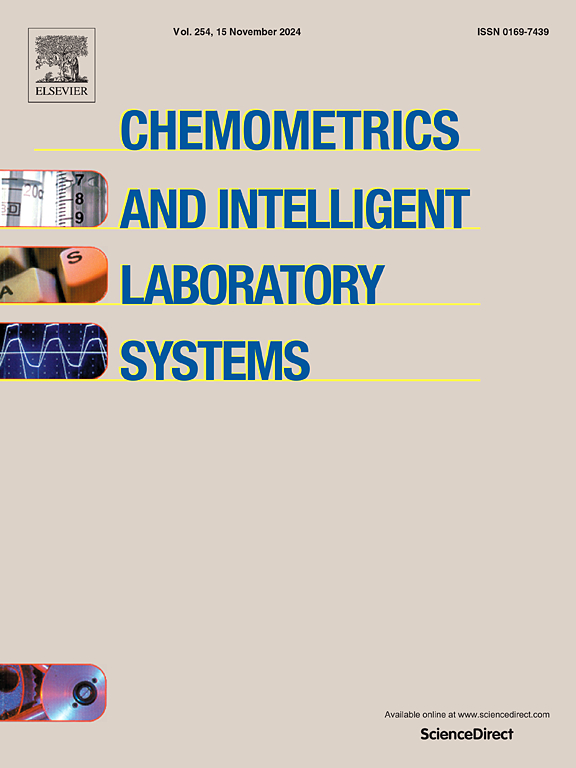Confidence interval on the kinetic parameters of simple condensed phase reactions
IF 3.8
2区 化学
Q2 AUTOMATION & CONTROL SYSTEMS
Chemometrics and Intelligent Laboratory Systems
Pub Date : 2025-05-22
DOI:10.1016/j.chemolab.2025.105434
引用次数: 0
Abstract
Confidence intervals play a crucial role in statistical inference, as they provide a range of values within which a population parameter is likely to fall, thereby enabling researchers to quantify the uncertainty associated with their estimates. This study proposes a new approach for estimating the confidence intervals on kinetic parameters of simple condensed phase reactions using a combined kinetic analysis and multiple linear regression. The conversion function may be represented in the form of truncated Šesták-Berggren (TSB), Šesták-Berggren (SB), or discrete cosine transform (DCT) models. The confidence intervals are calculated for pre-exponential factor, activation energy, and reaction exponents directly from multiple linear regression. However, for rate constant and conversion function, we need to estimate the variance of these parameters using the delta method. The proposed method was applied to the kinetic data from a simulated reaction as well as those of thermal decomposition of a commercial poly(methyl methacrylate). The results revealed that the DCT model provides highly accurate estimates with extremely narrow confidence intervals for kinetic parameters of the simulated reaction, whereas the TSB and SB models may exhibit systematic errors. The research also includes GNU Octave/MATLAB codes enabling readers to generate smooth reaction rate curves from noisy experimental data using the Fourier cosine series expansion and discrete cosine transform, approximate conversion functions with TSB, SB, and DCT models, and determine kinetic parameters and their confidence intervals for simple reactions through the new combined kinetic analysis methods.

简单凝聚相反应动力学参数的置信区间
置信区间在统计推断中起着至关重要的作用,因为它们提供了一个总体参数可能下降的值范围,从而使研究人员能够量化与他们的估计相关的不确定性。本文提出了用动力学分析和多元线性回归相结合的方法估计简单凝聚相反应动力学参数置信区间的新方法。转换函数可以以截断Šesták-Berggren (TSB)、Šesták-Berggren (SB)或离散余弦变换(DCT)模型的形式表示。指数前因子、活化能和反应指数的置信区间直接由多元线性回归计算。然而,对于速率常数和转换函数,我们需要使用delta方法来估计这些参数的方差。将该方法应用于模拟反应的动力学数据以及工业聚甲基丙烯酸甲酯的热分解动力学数据。结果表明,DCT模型对模拟反应动力学参数的估计精度很高,置信区间极窄,而TSB和SB模型可能存在系统误差。该研究还包括GNU Octave/MATLAB代码,使读者能够利用傅立叶余弦级数展开和离散余弦变换,利用TSB, SB和DCT模型近似转换函数,从嘈杂的实验数据中生成光滑的反应速率曲线,并通过新的组合动力学分析方法确定简单反应的动力学参数及其置信区间。
本文章由计算机程序翻译,如有差异,请以英文原文为准。
求助全文
约1分钟内获得全文
求助全文
来源期刊
CiteScore
7.50
自引率
7.70%
发文量
169
审稿时长
3.4 months
期刊介绍:
Chemometrics and Intelligent Laboratory Systems publishes original research papers, short communications, reviews, tutorials and Original Software Publications reporting on development of novel statistical, mathematical, or computer techniques in Chemistry and related disciplines.
Chemometrics is the chemical discipline that uses mathematical and statistical methods to design or select optimal procedures and experiments, and to provide maximum chemical information by analysing chemical data.
The journal deals with the following topics:
1) Development of new statistical, mathematical and chemometrical methods for Chemistry and related fields (Environmental Chemistry, Biochemistry, Toxicology, System Biology, -Omics, etc.)
2) Novel applications of chemometrics to all branches of Chemistry and related fields (typical domains of interest are: process data analysis, experimental design, data mining, signal processing, supervised modelling, decision making, robust statistics, mixture analysis, multivariate calibration etc.) Routine applications of established chemometrical techniques will not be considered.
3) Development of new software that provides novel tools or truly advances the use of chemometrical methods.
4) Well characterized data sets to test performance for the new methods and software.
The journal complies with International Committee of Medical Journal Editors'' Uniform requirements for manuscripts.

 求助内容:
求助内容: 应助结果提醒方式:
应助结果提醒方式:


